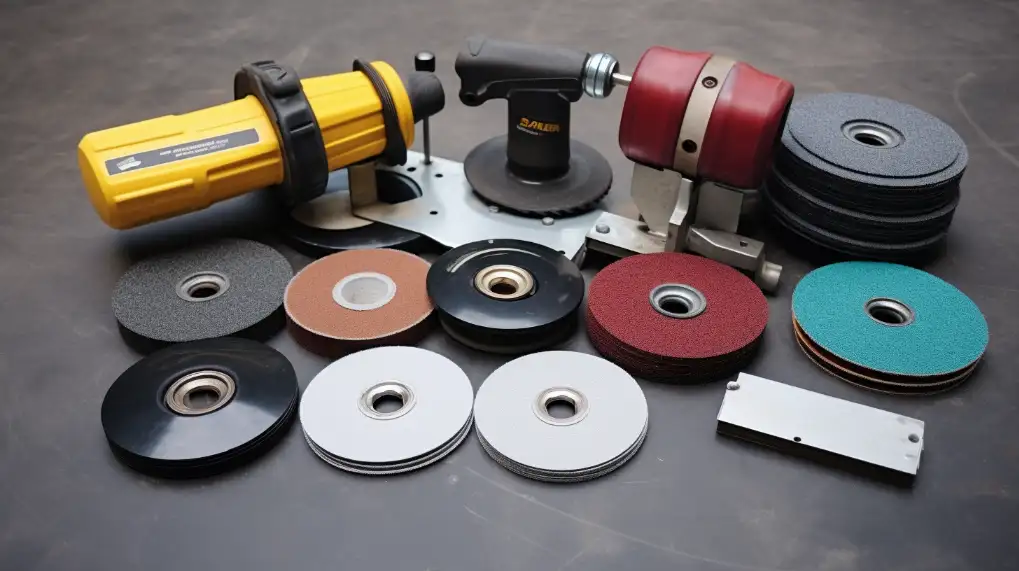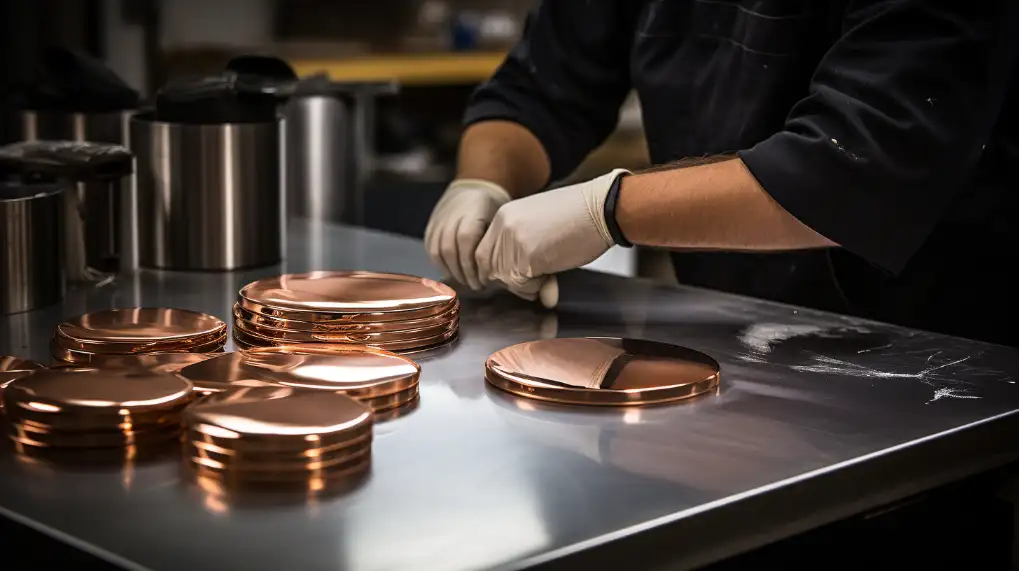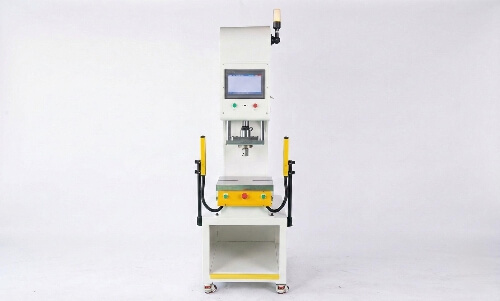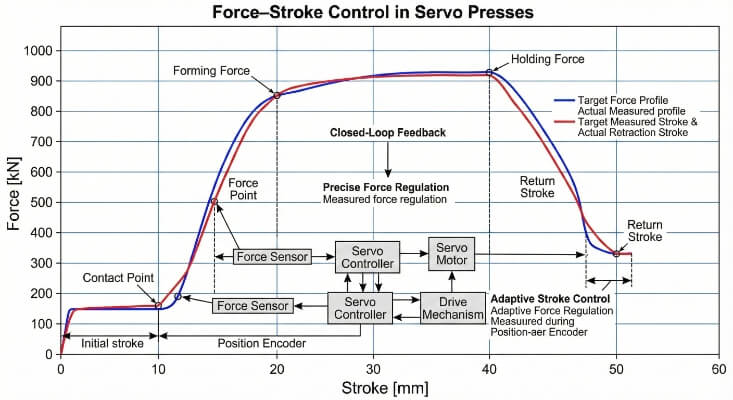Have you ever wondered how everyday metal objects get that smooth, matte finish? As a metalworking enthusiast, I’ve found satin finishing transformative for metal pieces and a deeply satisfying process. Here’s a quick guide on achieving that elegant satin metal finish.
To satin finish metal, start by coarsely sanding the metal, then use finer sandpaper for a smooth, dent-free surface. Polish evenly using a wheel or grinder with the fluid or oil. Finally, clean the metal surface with a cloth to remove all grit and grease, achieving a satin finish.
If you’re eager to learn the nuances of this craft and want to apply a professional-looking satin metal finish to your projects, keep reading. I’ll share the steps, insider tips, and tricks I’ve picked up along the way.
Satin finish metals are available in many different types.
Satin finish stainless steel
The satin finish is popular on stainless steel. This finish has a matte, smooth surface resistant to corrosion and tarnishing. This finish is used widely in automotive trim, kitchen appliances, and architectural elements. The durability of the material makes it ideal for indoor and outdoor use. The satin finish on stainless steel makes it easy to maintain and clean, which enhances its aesthetic appeal.
Satin aluminum finish
Aluminum with a satin finish is light and robust. This finish gives the metal a subtle texture and sheen, making it perfect for decorative uses. This finish is commonly found in consumer electronics, architectural facades, automotive parts, and other products. Aluminum’s satin finish makes it more resistant to fingerprints and scratches, so it’s a good choice for frequently touched surfaces.
Satin brass finish
Brass has warm, inviting colors. We give these metals a satin-like finish, which imparts a subtle, soft luster. This is perfect for decorative hardware and lighting fixtures. This finish enhances the natural beauty of metals and provides some protection from tarnishing. Note that satin-finished brass may require additional maintenance to maintain its beauty over time.
The Production Process
How to Satin Finish Metal
Satin finishes metal are a combination of art and science. It’s all about creating a uniformly textured metal surface. Various methods, including mechanical abrasion and chemical treatment, can achieve this. Each method offers its advantages depending on the metal type and desired result. The technique you choose determines the final quality and appearance.
A Step-by-Step guide to creating a satin finish metal
- Cleaning:Begin by cleaning the metal surface thoroughly. The outcome can be affected by any dirt, oil, or residue.
- Abrasion: Use abrasive wheels or belts to abrade metal surfaces uniformly. We usually achieve this by using varying grit sizes. Start with coarser grits and move to finer ones for a smoother surface.
- Inspection:Check the surface regularly to ensure it is even. We can quickly correct inconsistencies during the process.
- Final touches:Once the metal achieves the desired texture, we may treat it with additional treatments such as washing or applying protective coatings.
Tools & Equipment Used
Fundamental to advanced tools are available for creating a satin-like finish. At the primary level, we use manual sanding pads and instruments. Powered tools such as orbital sanders and belt grinders produce more uniform results. For high-end applications, specialized machines automate the abrasion. These machines are capable of producing high-quality finishes at a large volume. Protective equipment is also essential to ensure safety during the manufacturing processes.

Property and Benefits
Physical properties of Satin finish metals
Metals with satin finishes offer more than just aesthetics. They also have many practical advantages. Durability is the first important factor. Creating satin finishes strengthens surfaces in many cases, making them more resistant to wear and scratches. The surface is also more resistant to corrosion and tarnishing. This is especially true for metals such as stainless steel and aluminum. The matte sheen and matte finish of satin finishes give a modern and sophisticated look. This finish also reduces the visibility of minor imperfections and fingerprints, which can benefit areas with high traffic or applications that require a good appearance.
Comparison of Satin and Other Metal Finishes
Satin finishes are unique in their balance between aesthetics and function. Satin is a more forgiving finish than high gloss and suits everyday items well. They have a subtle shine, adding a touch of elegance to the item without often polishing it. The satin finish could be better at hiding flaws than the matte finish. While satin finishes may be durable, they require more maintenance to maintain their unique appearance.
Applications and Uses
Satin finish in Architecture
Architecturally, satin-finished metals are famous for their combination of elegance and functionality. One of the most notable examples is satin-finished stainless steel facade panels. It provides a sleek, modern look with durability. A satin-finished aluminum window frame and architectural trim add a modern aesthetic without the maintenance required by glossier finishes. These examples show how satin finishes enhance buildings’ aesthetic appeal while offering practical benefits such as weather resistance and low maintenance.
Use of Consumer Products
Satin finishes are used widely in consumer products because of their elegant appearance and practical benefits. Satin-finished electronic components, like laptops and sound systems, are popular because of their sleek look and resistance against fingerprints and scratches. We also use satin finishes on home appliances like refrigerators, microwaves, and kitchen accessories. They combine aesthetic appeal and ease of maintenance. These examples show how satin finishes can enhance everyday products’ visual and tactile appeal.
Industrial Applications
In industrial settings, we highly value satin finishes for their durability and ability to withstand harsh conditions. Satin-finished components, common in equipment and machinery like packing machines, provide durability and a polished appearance. This finish is beneficial for areas where clients can see the equipment or in high-volume scenarios because it is easy to clean and effectively conceals minor damage. Satin finishes are used in industrial settings to demonstrate their suitability for environments that require aesthetics and functionality.
Maintenance and Care
Cleaning & Maintaining Satin Finished Metals
Maintaining metals with a satin finish preserves their beauty and integrity. Soft cloth and mild soap will usually suffice to maintain the surface. Avoid abrasive products or harsh chemicals as they may damage the finish. Specialized cleaners for stainless steel can maintain the sheen of the metal without scratching its surface. Inspections of the surface for wear and damage are essential to catch problems early. Cleaning may need to be done more frequently in environments exposed to pollutants or elements.
Common Issues with Solutions
Even with the best care, scratches, corrosion, or tarnishing can affect metals with a satin finish. If you have minor scratches, you can minimize them by gently buffing them with a nonabrasive pad. If you notice corrosion on metals such as aluminum or copper, cleaning the area immediately and applying a protective coat is essential. This will prevent further damage. We can polish brass and copper metals with unique polishes. Adhering to the manufacturer’s maintenance guidelines and promptly addressing any problems is essential to ensure the satin finish lasts.

Future Trends in Innovation
Latest Trends on Satin Finish Metals
Technological advancements are constantly changing the world of metals with satin finishes. Developing environmentally friendly methods for satin finishes is one of the latest trends. This reduces the use of harsh chemicals. Nanotechnology is another innovation that can improve the durability and functionality of satin finishes. This makes them more resistant to bacteria, corrosion, and scratches. There’s also a growing trend of using satin-finish metals for unconventional applications like wearable technology or smart home devices. They add elegance and practicality while adding a touch.
The Future of Satin Finish in Various Industries
The future of satin finishes seems full of promise and potential. We may see a greater use of metals with satin finishes in architecture and interior design. They offer both aesthetic appeal as well as functional benefits. The automotive industry may also use satin finishes in their interiors to give them a modern and luxurious feel. A new generation of metal alloys explicitly designed for satin finishes could be created with enhanced properties such as excellent resistance to external factors and ease of maintenance. These developments will broaden the appeal and scope of satin-finish metals in different sectors.
Environmental Sustainability and Impact
Eco-Friendly Practices for Producing Satin-Finish Metals
The production of metals with satin finishes is increasingly concerned with sustainability. Recycling metals is an eco-friendly practice that reduces the need for virgin resources. Manufacturers are developing several technologies to reduce waste and energy usage. It is possible to reduce the environmental impact of cleaning and finishing processes using water-based methods instead of solvents. The industry is exploring less toxic abrasives in the satin-finishing process to reduce the environmental impact.
Reusability and Recycling of Satin Finish Metals
Metals with a satin finish are very recyclable. This adds to the sustainability of these metals. These metals can be melted and transformed into new products after their life cycle without losing their properties. Many industries often use metals such as aluminum and steel. Recycling and reusing these metals conserves natural resources while reducing greenhouse gas emissions. The satin finish metals industry significantly contributes to environmental conservation by prioritizing recycling.
Conclusion
The combination of aesthetics and functionality in satin finish metals is fascinating. Satin finish metals are versatile and have a long-lasting appeal. These metals are versatile and suitable for various applications, including architecture, consumer goods, and industrial settings. The industry will continue to grow and adapt as technology advances and sustainability becomes more important.
Your metal products with satin finish metal will stand out in a highly competitive market. We strive to offer you the best sheet-metal fabrication services. To learn more about our satin finish metal service, contact us. Together, we can create components that stand the test of time and surpass expectations.
FAQs:
Can metals with a satin finish be used outside?
Due to their corrosion resistance, many metals with satin finishes, such as stainless steel and aluminum, can be used outdoors. Regular maintenance is essential to avoid damage caused by environmental factors.
Are metals with a satin finish environmentally friendly?
The eco-friendliness of metals with a satin finish depends on their production method and base metal’s recycling. Satin finish metals are becoming more eco-friendly due to recent trends that use recycled materials and sustainable production practices.
Can satin-finish metals be recycled?
Most metals with a satin finish are recyclable. Metals such as aluminum and steel maintain their properties after recycling. Their recyclability allows for the reuse of new products, reducing environmental impact.
Does satin finish cost more than other finishes?
The price of satin finishes can vary depending on the type of metal and the complexity involved in the finishing process. It is generally more expensive due to the extra steps, but often less than a high-gloss finish.
What is the difference between satin and polished finishes?
The satin finish compromises high-gloss polished surfaces and flat matte finishes. It has a soft shine without the high reflectiveness of polished surfaces and provides more visual interest than matt finishes.
More Resources:
Metal Finishing Industry News – Source: MFN
Metal Polishing and Finishing Guides – Source: Benchmarkabrasives
Aluminum Finishing Techniques – Source: Gabrian
Hey, I'm Kevin Lee

For the past 10 years, I’ve been immersed in various forms of sheet metal fabrication, sharing cool insights here from my experiences across diverse workshops.
Get in touch

Kevin Lee
I have over ten years of professional experience in sheet metal fabrication, specializing in laser cutting, bending, welding, and surface treatment techniques. As the Technical Director at Shengen, I am committed to solving complex manufacturing challenges and driving innovation and quality in each project.




